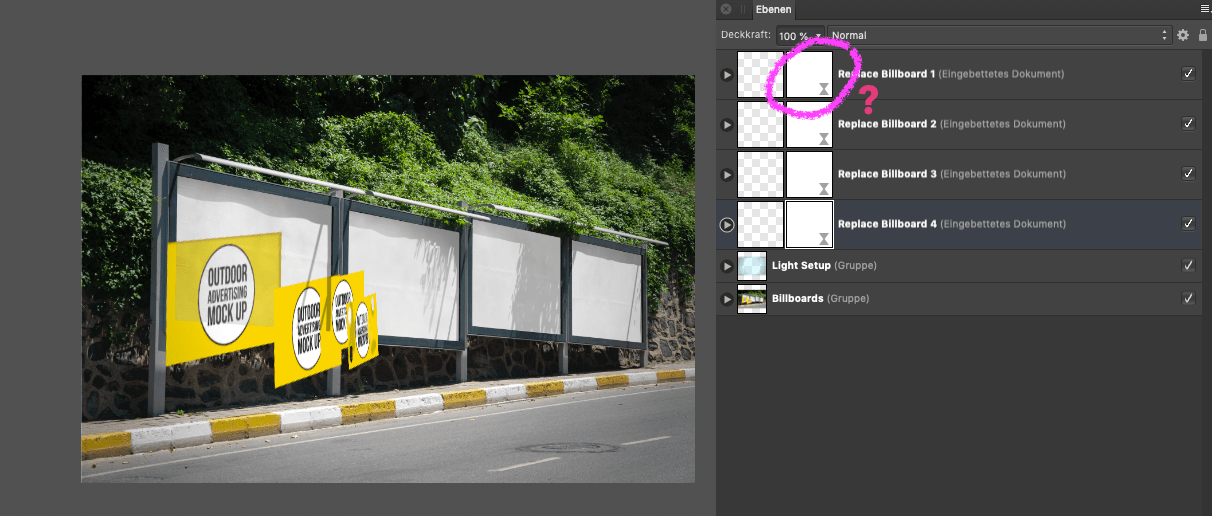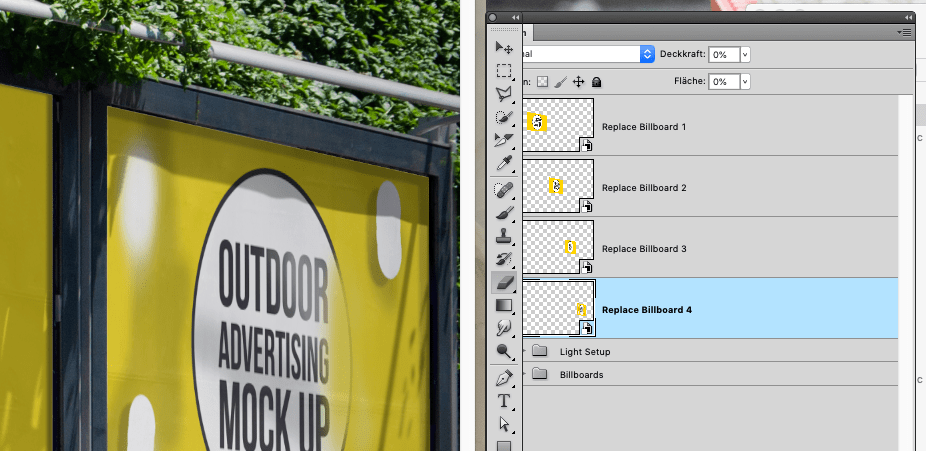-
Posts
410 -
Joined
-
Last visited
Posts posted by woefi
-
-
While I appreciate any button to customise everyones workflow, I would strongly propose to change the default to (OFF).
Reason:
- If I set a fill, I want to see a fill even with an placed image/logo.
- If I don't want to have a fill, I usually set the fill to NONE
- This is my expected behaviour as it is in line with other DTP-programs (although OK to be able to turn it on if one likes so.)
-
13 hours ago, loukash said:
Disable the "Clear fill on populate" button.
Thank You very much!!
Wow, have to say, I had to google your exact phrase for a screenshot, otherwise I would NEVER in a million years found this... It is NOT described in the help under "picture frame"! I append my screenshot for others like me:

This looked to me more like a scaling-relevant icon until I hovered over it. Should be moved over to the right, next to "Fill" if you ask me...
-
This happened to me multiple times and I cannot quite reproduce it, but:
Sometimes pressing cmd+a selects all text in the textbox and sometimes it switches the focus to the layers panel and selects all objects instead.
I believe it has to do with speed, meaning if you work on a project you double-click on a textbox to enter new text but the UI is not ready yet for textinput and so the "select all" command selects objects... I'm not sure. What I know is text input has always had a lag in affinity...
So I think this is a what a programmer would call a "race-condition" – only this time between the computer and the user...
-unnecessary little rant follows, please ignore-
I like the Affinity Suite and have very high hopes, but there are many unusual slow situations and other non-native things happening.
For example I use the system command HIDE (⌘H) very often to switch programs which I usually do by ALT-clicking a tiny gap from the desktop. In a native mac-app this is instant, but in publisher, with 4 to 5 open documents the panels and windows are disappearing one-after-one, so I have the suspicion they are doing some weird cross-platform/non-native stuff with the document windows.
Also, dragging a panel from one place to the other sometimes drops docked parts of it... and while dragging, some panels move over or under the other ones...
-
When placing logos (which have often times transparent backgrounds) inside a picture frame I want to have control over the readability. Especially if placing them over an image. So if the logo designer did not include a white background (paper is always white, so why bother...) and I don't want to risk altering the logo, I usually assign a white fill to the picture frame which then provides the opaque background for the logo.
I'm not able to do this in AfPub. Which is weird because a stroke is possible...
-
8 minutes ago, loukash said:
not when using the blue picture frame slider
Well, I really have no use for a scaling slider in a layout program...
Either I want to (A) autofill the frame (B) key in the exact numeric scaling or mostly (C) drag the edges of the image to set a crop like one would do in any other dtp-program...
-
-
..continued:
• If I set a scaling/crop and afterwards drag images on it, it is ok. CHECK
• If I set it to automatic scaling (the first option, fill and keep aspect ratio) it happens. BOING
-
1 minute ago, Pauls said:
I think the frame needs a crop or scaling applied before you start replacing images
Steps to reproduce:
I created a fresh document and made a new picture-box:
• if I drag multiple images into it they are all correctly placed. CHECK
• If I then move one side of the pictureframe to make it "narrower" the image inside keeps its correct aspect ratio. CHECK
• if I now drag multiple images into this frame the issue happens
-
I have these issues with my retail version (mac AppStore) of AfPublisher 1.9.3 Language "German" and with the beta 1.9.4 of AfPhoto, which is set to "English" (not US)
...btw. I'm on Mojave (10.14.6)
-
I just downloaded todays 1.9.4 beta of AfPhoto (because maybe they share this code)
Sadly, it is still happening...
-
I just tried that and it is working for me. (macOS 10.14.6 Mojave)
Maybe you have a file which is saved incorrectly... Can you reproduce this bug with another PSD and JPG combo?
-
tl:dr: The screengrab should explain it already.
Experimenting with different Images in a pinned down layout and being able to easily switch them out (e.g. for a retouched version) without changing the placement and aspect ratio is very important. It should work the same whether you are using the resource manager, using the replace-button or dragging it in from finder. (which, for me, is the fastest way when working visually)
But it does not. Obviously this is implemented in different ways... And the drag n'drop feature has (a) bug(s).
As there currently is no beta for publisher I cannot test if this is addressed already with the upcoming 1.9.4 RCs
-
6 hours ago, loukash said:
^ Well, that makes it pretty fast, considering the p.i.t.a. (pain in the arm) you'd have if wanting to right-click each of the 69 swatches manually:
Well, that's impressive although I was sure, if someone is determined to make it work, he will find sort of a workaround... but this absolutely has to be resolved inside the app by the Affinity-Team.
The important part is, the app already knew from which objects the swatch originated from, but it doesn't apply the global colour to it. So it is not linked, which is the whole point of a global colour swatch. Doing that by "select objects by colour" and then re-applying it (for all ~100 colour swatches) would be a second scripting workaround to make it work as a whole...
That's more of a "pain in the brain" if you ask me.
A real (officially supported) scriptable approach would enable such wonderful tools like I have in Illu CS5:
(of course I would prefer to have a native menu command instead...) -
9 minutes ago, PeterB. said:
but I haven't seen anything like it in Affinity Designer
Yeah, I was wondering when this feature will be fully implemented.
Because, as you said: the first part is already there – they just have to go the next step and make these colours global (like you already can with a single colour/object) and after that assign these (now global) colours back to the objects from which they came from.
Sounds to me like a simple script. ...if Affinity were scriptable. But what do I know – I'm not a "real" programmer...
-
-
out of curiosity, I downloaded one of these free templates.
I tried to open it in my old Photoshop CS5, which worked fine(-ish) as this version barely works today in Mojave...
What surprised me, was that upon first opening in APhoto it displayed OK and when saved as .afphoto and re-opened the perspective is off.
You can also see that in AfPhoto the smart-layers have an additional perspective applied, which they do not need and have in Photoshop. (see screenshots)


-
was hesitant all the time, to enable or disable this preference, as I am alternating between print- (CMYK) and screen-layouts.
It is always converting the colours to RGB although I mostly use RGB hex for web and CMYK for print.
It's a very useful feature, though. would be cool to selectively copy per right-click as the OP suggested.
-
I can confirm, Photo 1.9.1 immediately quits after showing the splash screen.
(the new Publisher beta works, thou)
-
in your dropbox...
I sent you a second, different file which also crashes afpub19b911
-
It crashes every time I open a pre-beta document (via: right-click > open with > publisher beta)
sometimes it displays the "this is a non beta document, are you sure?" dialog, but then crashes.
edit: it also crashes when using the regular menu command "open"
-
One thing I noticed looking at the window menu:
if you combine two document windows into one (as tabs) you have no way to switch between them (either via menu or by defining a new shortcut) other than with the mouse
...in contrast to the macOS Finder windows/tabs:


-
My use-case would require that I also have unused but registered colours in my document palette.
If I understand correctly, you would aim for a clean solution with only actually used ones in there? Sorry if I'm misunderstanding.
-
@Nazario I'm also not very happy with the current colour system in the affinity apps.
Working with what we got here, I would say:
- By "palette" you would use affinity's "document palette"
- the Swatch books would be all the other palettes in this dropdown
- >>> (your and my) problem is – one can never see them side-by-side for a simple drag-n-drop action.
(of course there would be some other things left to repair...)
-










keyboard focus not consistent (layer panel or text input)
in V1 Bugs found on macOS
Posted
Yeah, it happened only sometimes, its hard to track...
Recently I had to copy/paste single words into maaaany textboxes, and I think, switching documents and/or programs was also involved. It obviously had to happen rapidly fast as it's a rather boring task.